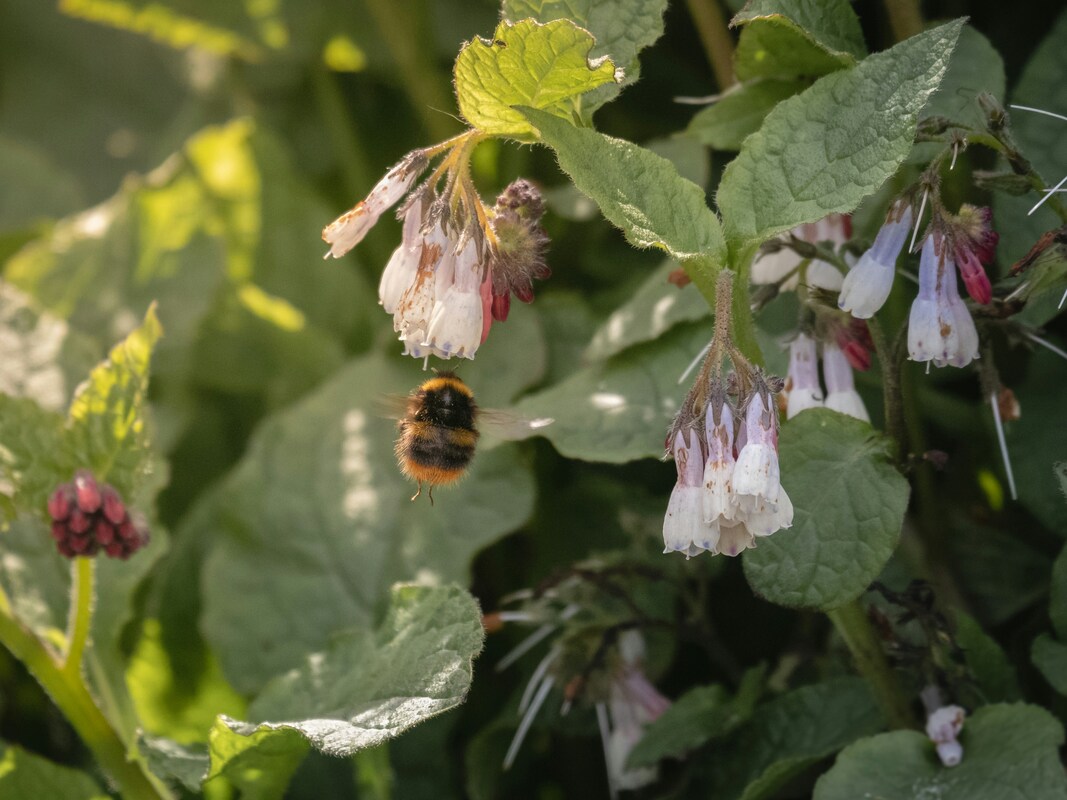|
2/20/2024 0 Comments Using Natural Fertilizers Ecological Gardening Practices
Part 5 Using Natural Fertilizers ‘Adopt the pace of nature’ - Ralph Waldo Emerson Over the past month, we have covered several eco-gardening topics: discover your ecoregion, growing the right plants, keeping your soil covered, and attracting beneficial insects. But if you implement all these practices but are still using synthetic fertilizers, weed killers, and pest controls on your lawn and in your landscape, you are basically shooting yourself in the foot, negating all your positive efforts. Most synthetic products can damage the beneficial microorganisms in the soil. If your soil is healthy, its teaming with beneficials that are doing all the work that a fertilizer would do. They help convert nitrogen from the air into the soil making it a usable form of food to the plants. They help decompose dead plant matter into what the plants need. By continually using synthetic fertilizers on our lawns, edible gardens, and landscapes, we lose this important natural ecosystem, and the plants come to depend on us. This makes more work for us! Here are alternatives that mimic a natural ecosystem . . .
Other options:
As we make the switch from synthetic to natural, we must realize that we can’t rush Mother Nature. Natural pest solutions and fertilizers take time. They work, but they work on their own time table because they are establishing a healthy ecosystem. In a culture that wants to see results quickly (think same-day Amazon delivery), we need to ‘adopt the pace of nature’, slow down, and let nature do the work for us. If the thought of giving up a green, perfect lawn is something you just can't do cold turkey, then consider easing your way into a more natural approach. Here are three tips: 1. Switch to a natural lawn fertilizer like Milorganite. Apply it in the spring or ideally in the fall. 2. Fertilizer less frequently. 3. Reduce the size of your lawn and add native plants. This will reduce the amount of fertilizer and water inputs right away! That wraps up our eco-gardening series. If you want to learn more, mark your calendars for Saturday, March 23. Naturalist, Beth Goeppinger will be here presenting ‘Planning Your Native Landscape’. You can also check out the links below. LINKS: Homegrown National Parks Native Plant Finder Natural Fertilizers to Improve Garden Soil
0 Comments
The goal in gardening ecologically is to garden with plants best adapted to our locale and the wildlife that is here. So an ecological gardener will intentionally select plants that will support that wildlife. Natives are the best choice. They have grown and thrived in their ecoregion for centuries.
Right plant, right place. This is a long-held horticulture practice, and it is at the root of gardening ecologically successfully. The question we should ask is, what would thrive in the natural conditions of this place. Whether it’s wet or dry, sunny or shady, placing plants where they will thrive and require minimal care once established is what we are striving for. Why plant native? The National Wildlife Federation says it best: “Native plants help the environment the most when planted in places that match their growing requirements. They will thrive in the soils, moisture and weather of your region. That means less supplemental watering, which can be wasteful, and pest problems that require toxic chemicals. Native plants also assist in managing rain water runoff and maintain healthy soil as their root systems are deep and keep soil from being compacted.” You may already be growing some native perennials like coneflower, black-eyed susans, yarrow, or milkweed. But don’t limit your palette! There is a vast array of native plants that do well here in SE Wisconsin including trees and shrubs. Here is a list to get you started - just click on Native Plants and enter your zipcode. What if you don’t have a big yard? For small gardening spaces, including decks, patios, and balconies, there are herbaceous native plants that you can grow in container gardens. Check them out here. Keystone Plants There are native plants, and then there are really good native plants called keystone plants. Much research has been done studying which native plants support the most native pollinators in each ecoregion. These keystone plants are essential to our ecosystems. There are two types of keystone plants. Host plants support up to 90% of caterpillar species that in turn support our terrestrial birds enabling them to reproduce. The other group of keystone plants feed both general and specialist native bee populations. For example, the white oak and the black oak trees are the best native trees you could plant because they support the most diverse insect species - 436 different caterpillar species to be exact! Goldenrod (Solidago rigida) is one of the best keystone native perennials we can include in our landscapes because it supports 104 different caterpillar species as well as 43 specialist native bee species. Sunflowers also are at the top of the list supporting 50 specialist bee species! Even growing just one keystone plant can make a huge difference. Here’s a list to get you started. But remember that our ecoregion (Eastern Temperate Forest) covers many zones, so also refer to those specific to your zipcode. If you want to learn more about keystone native plants, listen to this podcast with Doug Tallamy. Next week we will focus on living mulches, and our series will continue each week addressing the following ecological practices: 3. Keep your soil covered 4. Attract beneficial insects 5. Use natural fertilizers Watch for an opportunity to continue the conversation in person here at Burlington Garden Center coming soon. Until then, check out the links below to learn more. LINKS: Eco Regions Map Homegrown National Parks Native Plant Finder |
|
|
STORE INFO
5205 Mormon Road Burlington, WI 53105 262.763.2153 |


